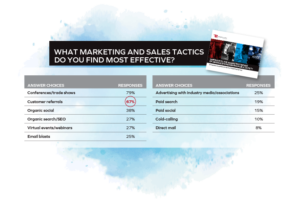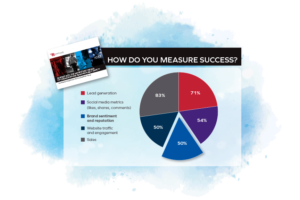As we approach a new year, you may be wondering if now is the time to give your public safety marketing a turbo boost and who should help you with that. If you’re considering working with a specialized firm, this piece outlines how we do things at RedFlash Group based on what we have found works best in establishing fruitful engagements for clients and fulfilling work for our team.
Use it as a way to test whether you think this approach could work for your organization OR as a reference if you’re newly exploringhow marketing firms plug into their client organizations.
Before we go farther, a confession. RedFlash isn’t for everyone. What we specialize in and how we approach client engagements is not a fit for all organizations. And we’re ok with that. We believe in the value of upfront transparency and are quick to call out if there is a misalignment in a prospect’s needs with our superpowers when exploring working together. You can hold us to that.
But First, Are You Really Ready to Work with a Specialized Marketing Agency?
The vetting process is critical…for both of us. We all want an engagement to be a success for all parties involved and that means identifying fit as early as possible.
Here are some key criteria to help you determine if you’re ready to engage with us:
Are You Public Safety Focused?
We work with clients targeting public safety audiences: Law Enforcement, EMS, Fire, 911, emergency management and related fields. We also work on projects targeting healthcare, but anything beyond that is outside our realm of expertise. Our clientele includes commercial organizations, the federal government (we support communications for NHTSA’s Office of EMS and National 911 Program), and some nonprofits.
Have You Set Clear Goals?
We’re able to bring the most value when prospects share where they’re at and where they want to go, including business and marketing/sales goals. Be ready to answer questions like: What is your current revenue and what are your growth goals? What leads do you tend to have in the pipeline on a monthly basis? What would you want that figure to be? These help tell us whether we can help you and point to the kinds of marketing efforts that could be most supportive of your business goals.
Do You Take a Team Approach?
We see ourselves as part of our client’s team. As a result, we embrace what we call healthy conflict. This means being really honest with clients and sharing recommendations founded in our industry expertise, even when that includes pushing back or offering constructive feedback on their marketing strategy or output. We don’t think we’d be good partners if we DIDN’T do these things, but it’s important clients are willing to be receptive and remember thatwe’re on the same team.
Is There a Point of Contact with Decision-Making Power?
Budgets go further when we have a regular point of contact with decision-making authority to approve things like direct costs, campaign direction and specific deliverables. We also find that a coordinator-level position on the client side to help facilitate communication is helpful – meeting scheduling, circulating materials amongst their team, tradeshow coordination, etc.
Are You Ready to Invest?
Do you have funds allocated for a marketing investment? If so, what is that budget range and how does it align with your goals? Be thinking of answers to those questions to give us an idea of how big or small you want to go.
Are You Aligned With the Set Order of Operations?
We believe strongly in beginning with strategy before we dive into executing tactics. Teams who aren’t interested in strategy and only want deliverables aren’t a fit for us.
Our engagement discovery process includes conversations focused on the elements above. If we find there is enough alignment to move forward, we’ll develop a three-tiered set of engagement options customized to your goals and markets. Once we fine-tune the right tier for you, we craft a more detailed scope of work and contract. And then, the magic gets going.
Starting Strong: Diagnostic + Communication Plan
We begin a client engagement with a diagnostic exercise followed by a communication plan. Yes, it’s terribly tempting to jump right to tactics. But, without the discipline to ensure those tactics are founded in strategy, they could result in wasted resources. We think of it as diagnosing before prescribing.
A diagnostic typically includes surveying internal stakeholders, interviewing clients/partners, a competitive messaging analysis and a marketing audit.
We meet with clients to share findings from the diagnostic work and use those insights to inform the development of acommunication plan. This plan identifies key audiences, positioning, messaging, strategies and initial tactics to set a roadmap for marketing activities.
All in, the diagnostic and communication plan work takes 3-4 months and costs roughly $50k. We find these plans hold their value for about 2-3 years before it’s time to give them a refresh.
Execution: Implementing Tactics
Sometimes we deliver a communication plan and our clients take it from there. But most often, we are either a bolt-on part of their marketing team collaborating with them to bring the communication plan to life OR we are their soup-to-nuts marketing team handling all execution. It just depends on our client’s resources and meeting them where they are.
When we are part of executing tactics, the work could include activities like:
- Content development/storytelling: Ebooks, videos, blog posts, case studies, white papers, articles
- Content promotion + digital marketing: website, landing pages, organic social, paid media (social and google ads), programmatic, geotargeting, retargeting, eblasts, SEO
- Branding: organization and product naming, taglines, logo + brand look
- PR: Press releases, getting articles picked up by public safety media
- Webinars: media negotiations, ideation, faculty development, prep / coaching, promotion
- Association and media partnerships, advertising and sponsorships
- Conference strategy and custom sponsorship packages
- User/customer gatherings and events; focus group meetings
Following delivery of the communication plan, we’ll agree on which tactics are priorities for the remainder of the engagement (usually 6-7 months worth of work as part of a 12-mo agreement). The budget for this phase will depend on the client’s goals and urgency, market share objectives, etc. Together, we’ll chart out and execute a work plan with room to adapt to unforeseen opportunities and respond to what we learn from results. As we near the end of the engagement period, we realign on goals for the next year and the right budget / activities to support those goals.
Let’s dig into the details of the relationship including rough timelines and associated costs.
The Nitty Gritty: Engagement Logistics
Now that you know the flow of how our engagements work, here are some final details about contract logistics and what else to expect from us.
Engagement Duration and Size:
Our engagements take on different shapes and sizes. But, on average they’re for a 12-month duration at a $200k consulting budget. We have some that are significantly larger, and some that are slightly smaller. A minimum engagement size allows us to bring our team of strategists, PR gurus, writers, designers and digital experts to the party. Unlike one-off project contracts, annual engagements allow us to be proactive in putting together the right mix of initiatives for the year.
Direct costs (media ad buys, paid social spend, etc.) are not included in our consulting budget. Recommendations for direct cost investments are shared with clients on an ongoing basis and must be approved by our clients before we proceed.
Though it’s rarely needed, our contracts have a 30-day out in case it’s determined the engagement isn’t fit, a client’s goals change, or they have a shift in budget.
Billing:
There are a few different ways we approach billing with clients. At times, we have a time-based approach. This means RedFlash project managers monitor work to facilitate an even burn throughout the year to make sure we complete work on budget. This may mean there are some heavier months to support special campaigns balanced out by lighter months to even out billing.
Another way we can approach billing is more outcomes-based with fixed pricing. The benefits of this option are the focus on results and a consistent invoice amount.
Either way, our team provides monthly invoices that are accompanied by progress reports outlining work completed that month and projecting activities for the following month.
Reporting:
Early on in the implementation process, we’ll agree on key performance indicators for measuring the success of work together. Results against those KPIs are discussed regularly to identify what’s working, what isn’t, what we should test, etc. This is usually reviewed in recurring meetings we schedule and lead (either biweekly or monthly) to walk clients through recent results, work underway, hear what impact they’re seeing on the sales side, discuss new ideas, etc.
And there you have it.
At RedFlash, we strive to cultivate client relationships that can last many years and produce work we’re all proud of. We “show up” to work every day (aka go online; we’re all remote) because we want to help our clients. Ok, it’s more than that…we want to DAZZLE them. Our team gives their energy, creativity and time to support clients in realizing their goals. And we care deeply about making the process a great experience for them. Furthermore, we value the difference our clients make in supporting public safety and the communities they serve. In fact, our “why” at RedFlash is to “partner with great organizations to make our communities safer and healthier.”
If the way we work is in line with the support you’re after, we’d love to talk.
Related Posts
-
No doubt you know all about the Great Resignation. According to the latest Job Openings…
-
It’s easy in tough economies to want to bypass strategy and go straight to tactics.…
-
We’ve all been there. You work for months on a marketing campaign, only to deploy…









 The RedFlash Group is a GSA Contract Holder under Schedule 541, Advertising and Integrated Marketing Solutions
The RedFlash Group is a GSA Contract Holder under Schedule 541, Advertising and Integrated Marketing Solutions